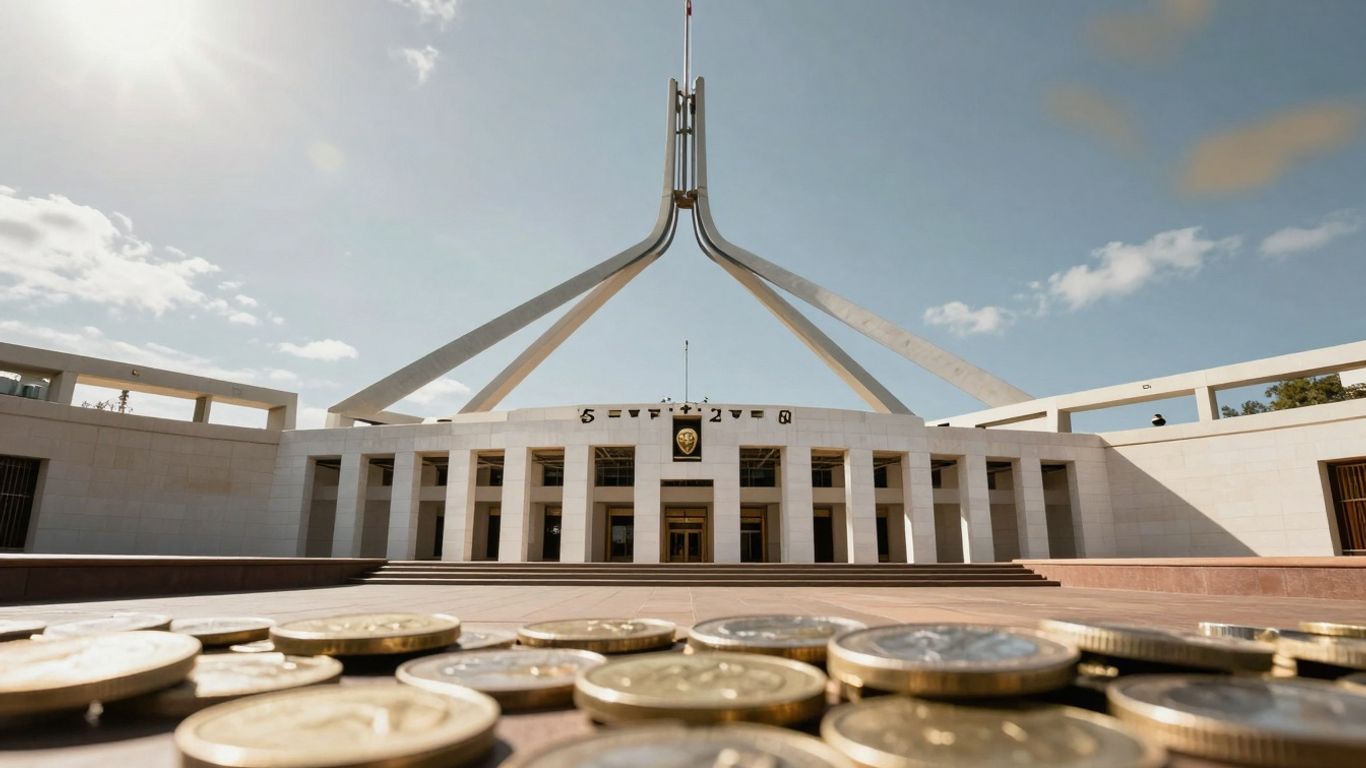Alright, let’s talk about your after tax salary in Australia for 2025. It can feel a bit confusing with all the rules and numbers, but figuring out what you actually get to keep after everything is taken out is pretty important. This guide breaks down the key bits, from tax changes to how to boost your take-home pay. We’ll keep it simple, so you can get a clear picture of your money.
Key Takeaways
- Your residency status for tax purposes is a big deal in Australia. Being a tax resident means you generally pay tax on your worldwide income, while non-residents only pay tax on income earned in Australia. This status affects your tax rates and access to things like the tax-free threshold.
- Australia’s financial year runs differently than in some other countries, from July 1 to June 30. Tax returns are usually due by October 31, but using a registered tax agent can get you an extension. Missing these dates can mean penalties.
- You can reduce your taxable income by claiming work-related expenses, like tools or home office costs, if you spent money to earn your income. Also, look into tax offsets and rebates that might apply to your situation to lower your tax bill.
- Superannuation, or your retirement savings, has its own tax rules. Employer contributions are taxed, but voluntary after-tax contributions might be deductible, helping to lower your current taxable income and build your retirement fund.
- Beyond income tax, be aware of other potential taxes like Capital Gains Tax (CGT) when you sell assets, and the Goods and Services Tax (GST) if you run a business. Understanding these can prevent surprises.
Understanding Your After Tax Salary Australia: A 2025 Guide

Alright, let’s talk about what actually hits your bank account after the taxman takes his slice. In Australia for 2025, understanding your after-tax salary, or Net Income After Taxes (NIAT) as it’s often called, is pretty important. It’s not just about the number on your payslip; it’s about what you can actually spend, save, or invest. With some changes kicking in from July 2024, knowing how it all works is more relevant than ever.
Key Changes to Tax Brackets and Rates
Australia uses a progressive tax system, meaning the more you earn, the higher the percentage of tax you pay on those higher earnings. For the 2025 financial year (which runs from July 1, 2024, to June 30, 2025), there have been some adjustments, particularly for lower and middle-income earners. These changes mean many Australians will see a bit more money in their pocket compared to last year.
Here’s a simplified look at the main income tax brackets for residents:
| Taxable Income | Tax Rate |
|---|---|
| $0 – $18,200 | 0% |
| $18,201 – $45,000 | 16% |
| $45,001 – $135,000 | 30% |
| $135,001 – $190,000 | 37% |
| $190,001 and over | 45% |
Note: These rates are for Australian residents and don’t include the Medicare Levy.
The Medicare Levy and Surcharge Explained
On top of your income tax, most Australians also pay the Medicare Levy. This is currently set at 2% of your taxable income and helps fund our public healthcare system. For 2025, the threshold for paying the full Medicare Levy has been increased, meaning fewer people will be paying it. There’s also the Medicare Levy Surcharge (MLS), which applies to higher-income earners who don’t have an appropriate level of private health insurance. It’s an extra 1% to 1.5% on top of your taxable income, depending on your income level.
The Medicare Levy is a flat percentage, but the Surcharge is tiered. It’s designed to encourage people to take out private health insurance and ease the burden on the public system. If your income is high enough, it’s worth checking if you have the right private cover to avoid this extra charge.
Impact of Residency Status on Your Tax Bill
Your tax situation in Australia can change quite a bit depending on whether you’re considered a tax resident or a foreign resident. Generally, if you live in Australia and intend to stay, you’re a tax resident. Residents pay tax on their worldwide income. Foreign residents, on the other hand, only pay tax on income they earn from Australian sources. This distinction is really important, especially if you’re new to the country or planning to move overseas.
- Australian Residents: Taxed on all income, no matter where it’s earned.
- Foreign Residents: Taxed only on income generated within Australia.
- Part-Year Residents: If you move to or from Australia during the financial year, your tax-free threshold might be prorated, meaning you only get the benefit for the portion of the year you were a resident. This can affect your overall tax calculation.
Calculating Your Net Income After Taxes
So, you’ve got your payslip, and you see that big number at the top – your gross salary. But let’s be real, that’s not the money you actually get to spend. We need to talk about what’s left after the taxman takes his cut. This is your net income after taxes, or what most people just call their take-home pay. It’s the figure that really matters when you’re planning your budget, figuring out how much you can save, or even how much a bank might lend you for a house.
Defining Gross Income vs. Taxable Income
Your gross income is pretty straightforward – it’s all the money you’ve earned before any deductions are made. This includes your salary, wages, any bonuses, and even things like allowances. But not all of that gross income is subject to tax. That’s where taxable income comes in. Taxable income is your gross income minus any allowable deductions you can claim. Think of deductions as legitimate expenses that reduce the amount of income the ATO taxes. For example, if you’ve paid for work-related training or bought specific equipment for your job, these might be deductible, lowering your taxable income.
How Net Income After Taxes is Determined
Once we’ve figured out your taxable income, the next step is to calculate the actual tax you owe. This involves applying the relevant tax rates for the Australian financial year to your taxable income. Remember, Australia uses a progressive tax system, meaning higher income earners pay a higher percentage of tax on their income above certain thresholds. On top of the income tax, you’ll also have the Medicare levy added, which is currently 2% for most people. If you earn above a certain amount and don’t have private health insurance, you might also face the Medicare Levy Surcharge. After all these taxes and any other compulsory deductions (like certain superannuation contributions) are subtracted from your taxable income, you’re left with your net income after taxes.
Illustrative Example of After Tax Salary Calculation
Let’s look at a simple example. Say you earn a gross salary of $80,000 for the 2025 financial year. After claiming some work-related expenses, your taxable income might be reduced to $77,000. Now, we apply the tax rates for that income bracket. For income between $45,001 and $135,000, the tax rate is 30%. So, the income tax on $77,000 would be calculated based on this rate, plus a flat amount for the lower brackets. On top of that, we add the 2% Medicare levy. The exact calculation can be a bit fiddly, but for an $80,000 gross salary, after tax and the Medicare levy, you might be looking at around $60,000 to $62,000 in your pocket. It’s always a good idea to use the ATO’s online calculator or check your payslip carefully to see how these figures are broken down for your specific situation.
Understanding the difference between gross, taxable, and net income is the first step to managing your money effectively. Don’t just look at the headline salary figure; dig a little deeper to see what you’re actually working with.
Here’s a simplified breakdown:
- Gross Income: Your total earnings before anything is taken out.
- Allowable Deductions: Expenses you can claim to reduce your taxable income (e.g., work-related costs).
- Taxable Income: Gross Income minus Allowable Deductions.
- Income Tax: Calculated based on progressive tax brackets and rates.
- Medicare Levy: An additional percentage added to your tax bill.
- Net Income After Taxes: Your final take-home pay after all deductions and taxes.
Navigating the Australian Financial Year
The Australian financial year might feel a bit different if you’re used to other systems. It kicks off on July 1st and wraps up on June 30th each year. This means your tax return is usually based on the income you earned between those dates. It’s a good idea to get familiar with these dates, as they’re pretty important for staying on top of your tax obligations.
Key Dates for Tax Returns and Lodgement
Mark these dates in your calendar! For most individuals who do their own tax return, the deadline is October 31st. If you’re using a registered tax agent, they might get you an extension, but you need to be signed up with them before that October 31st cutoff. Missing these dates can lead to penalties, so it’s best to get your paperwork sorted well in advance.
Consequences of Missing Tax Deadlines
Look, nobody likes getting a penalty from the tax office. If you miss the lodgement deadline, the Australian Taxation Office (ATO) can hit you with fines and interest charges. It’s not the end of the world, but it definitely costs you more money and adds unnecessary stress. The sooner you lodge, the sooner you can get any refund you might be owed, and the less likely you are to face extra charges. It’s really worth putting in the effort to lodge on time.
Understanding the Prorated Tax-Free Threshold
If you weren’t in Australia for the entire financial year, things get a little different with the tax-free threshold. This threshold is the amount of income you can earn before you start paying tax. For people who are residents for tax purposes for only part of the year, this threshold gets adjusted. It’s calculated based on how many days you were an Australian resident for tax purposes during that financial year. So, if you arrived halfway through, you’d only get half of the usual tax-free threshold applied to your Australian income for that period. It’s a bit of a fairness thing, really, making sure you’re only taxed on the income earned while you were a resident.
Maximising Your Take-Home Pay
So, you’ve got your eye on that pay slip, wondering how to make it stretch a little further? It’s a fair question, especially with the 2025 tax year shaking things up. The good news is, there are definitely ways to keep more of your hard-earned cash in your pocket, rather than sending it all off to the ATO. It’s all about being smart with what you can claim and how you structure your earnings.
Claiming Eligible Work-Related Expenses
This is where you can really make a difference. If you’ve spent money directly on earning your income, chances are you can claim it back. Think about the tools you use for your job, the specific work clothes you need (and have to clean!), or even the cost of that online course that helps you do your job better. If you’re working from home, there are specific rules about claiming a portion of your bills like internet and electricity. It’s not about claiming your morning coffee, but the actual costs that help you do your job.
Here are some common things people claim:
- Tools and equipment: Anything you need to buy to do your job, like a specific type of drill for a tradie or a specialised keyboard for a programmer.
- Uniforms and protective clothing: If your employer requires you to wear a specific uniform or protective gear, and it’s not just everyday wear, you can usually claim the cost of buying and cleaning it.
- Self-education expenses: Courses, degrees, or training that relate directly to your current job or will help you get a higher-paying job in your current field.
- Home office expenses: If you regularly work from home, you can claim a portion of your utility bills, internet, and even the depreciation of your home office furniture. The ATO has specific methods for calculating this, so check their guidelines.
Remember, you need to keep records for all your claims. This means receipts, logbooks, and bank statements. Without proof, the ATO can disallow your deductions, and nobody wants that.
Leveraging Salary Packaging and Sacrificing
This is a bit more advanced, but can seriously boost your net income. Salary packaging (or sacrificing) means arranging with your employer to pay for certain things directly from your pre-tax salary. This reduces your taxable income, meaning less tax is taken out. Common examples include:
- Superannuation: Contributing extra to your super fund from your pre-tax salary is a popular one. The tax rate on these contributions is generally lower than your marginal income tax rate.
- Novated car leases: You can get a car through your employer, and the costs (loan repayments, fuel, insurance, maintenance) are paid from your pre-tax salary. This can be a great way to get a new car and save on tax.
- Other benefits: Depending on your employer, this could include things like paying for extra leave, professional development, or even certain electronic devices.
It’s important to chat with your employer or a financial advisor about salary packaging, as the rules can be complex and depend on your specific circumstances and employer’s policies.
Utilising Tax Offsets and Rebates
Tax offsets and rebates are like direct discounts on the tax you owe. They’re different from deductions, which reduce your taxable income. Offsets reduce your actual tax bill dollar-for-dollar. Some common ones include:
- Low Income Tax Offset (LITO): If your income is below a certain threshold, you might be eligible for this offset, which reduces your tax payable.
- Low and Middle Income Tax Offset (LMITO): While this has been phased out for some, it’s worth checking if any similar measures are in place for 2025 that could benefit you.
- Seniors and Pensioners Tax Offset (SAPTO): If you’re a senior Australian, you might qualify for this.
- Private Health Insurance Rebate: While not directly an income tax offset, it reduces the cost of your private health insurance premiums, freeing up cash.
Always check the Australian Taxation Office (ATO) website or speak to a tax professional to see which offsets and rebates you might be eligible for. Making sure you claim everything you’re entitled to is key to maximising your take-home pay.
Superannuation’s Role in Your After Tax Salary

Superannuation, or ‘super’ as most Aussies call it, is a pretty big deal when you’re thinking about your take-home pay and your future. It’s basically your retirement savings, and the government has specific rules about how it’s taxed. This can really affect how much money you actually get to keep from your salary each fortnight, and also how much you’ll have when you eventually stop working.
Taxation of Employer Super Contributions
When your employer pays money into your super fund for you, it’s not just added to your salary. There’s a tax applied to these contributions before they even hit your super account. Generally, this tax is set at 15%. So, if your employer is supposed to put $100 into your super, only $85 actually goes in after the tax is taken out. For most people, this is a pretty straightforward system. However, if you’re earning a really high income, the tax rate on these employer contributions can be higher than 15%.
Benefits of Voluntary After-Tax Contributions
Beyond what your employer puts in, you can also choose to put extra money into your super from your own pocket. These are called voluntary after-tax contributions. The cool thing here is that these contributions might be tax-deductible. What this means is that the money you contribute voluntarily can actually lower the amount of income you’re taxed on for that financial year. So, you pay less income tax now, and you’re also building up your retirement nest egg. It’s a bit of a double win, really.
Withdrawal Rules for Superannuation Funds
When you reach retirement age, usually after 60, and you’re an Australian resident, the money you take out of your super fund is generally tax-free. This is a major benefit of the super system. However, the rules can get a bit trickier if you’re not an Australian resident, or if you decide to move your super overseas. It’s always a good idea to check the specific rules that apply to your situation, especially if you’ve lived or worked in different countries. Getting this wrong could mean an unexpected tax bill down the track.
Here’s a quick rundown of how it generally works:
- Employer Contributions: Taxed at 15% on entry (can be higher for high earners).
- Voluntary Contributions: May be tax-deductible, reducing your current taxable income.
- Withdrawals (after age 60, resident): Generally tax-free.
- Withdrawals (other circumstances): Tax rules can vary significantly based on age, residency, and fund type.
It’s worth remembering that superannuation rules can change, and your personal circumstances, like your residency status or if you have super in multiple countries, can make a big difference. Don’t just guess; if you’re unsure, it’s best to get some advice to make sure you’re not caught out with unexpected taxes when you need that money most.
Other Taxes Affecting Your Earnings
Beyond the regular income tax and Medicare levy, there are a few other taxes that might chip away at your earnings or affect your financial decisions in Australia. It’s good to have a heads-up on these so they don’t catch you by surprise.
So, you’ve made a profit selling something? If you’ve sold an asset like shares, property (other than your main home, usually), or even some collectibles for more than you originally paid, you might be looking at Capital Gains Tax (CGT). For Australian residents, this tax applies to profits made on assets worldwide. If you’re not a resident, it’s generally only on Australian assets. The profit you make gets added to your regular income for the year and taxed at your marginal rate.
Here’s a quick rundown on how it works:
- Discount for long-term holders: If you’ve owned the asset for more than 12 months, you might get a 50% discount on the capital gain. This is a nice little bonus for hanging onto things.
- Main residence exemption: Generally, the home you live in is exempt from CGT, provided you meet the ATO’s rules. It’s your primary place of residence, after all.
- Record keeping is key: Keep good records of what you paid for assets and any costs associated with them. This makes calculating your gain much easier and can help you claim all the deductions you’re entitled to.
The Australian Taxation Office (ATO) has specific rules about what counts as an asset and how gains are calculated. It’s always a good idea to check their latest advice or speak with a tax professional before you sell, especially if it’s a significant sale.
GST is basically Australia’s version of a sales tax. Most employees don’t really need to worry about paying it directly on their wages. However, if you’re running a business, freelancing, or selling goods and services, GST becomes a much bigger deal. You might need to register for GST if your turnover reaches a certain amount, and then you’ll need to charge it on your sales and report it to the ATO. It can also affect the costs you claim as business expenses. For instance, if you buy something for your business that includes GST, you might be able to claim that GST back as a credit. It’s all part of running a business in Australia.
There are a few other things that might pop up. For example, if you’re a business owner, you’ll need to be aware of payroll taxes, which vary by state and are paid by the employer. Also, if you’re looking at superannuation, while employer contributions are taxed in a concessional way, voluntary after-tax contributions have different rules. The government sometimes introduces new tax offsets or rebates, so it’s worth keeping an eye on what’s available each financial year. For example, there have been recent changes to the low-income superannuation tax offset, which could put more money back in your pocket if you qualify. You can find out more about superannuation tax rules on the ATO website.
Wrapping It Up
So, that’s the lowdown on your after-tax salary in Australia for 2025. It’s not always the most exciting topic, I know, but understanding what actually hits your bank account is pretty important for, well, everything. From budgeting your weekly shop to planning for the future, knowing your net pay is key. The tax rules can seem a bit much sometimes, and they do change, so keeping an eye on things and maybe getting a bit of help if you need it is a smart move. Don’t forget those deductions you’re entitled to – they can make a real difference to what you keep. All in all, a bit of tax know-how can save you headaches and, more importantly, keep more of your hard-earned cash in your pocket.
Frequently Asked Questions
Do I need to pay income tax in Australia if I’m working there but not a citizen?
If you’re considered an Australian resident for tax purposes, you’ll pay tax on all the money you earn, no matter where in the world it comes from. If you’re not a resident, you’ll only pay tax on the money you earn within Australia.
How can I figure out if I’m a tax resident or not in Australia?
It’s not just about your visa! Where you live and work plays a big part. The Australian Taxation Office (ATO) has an easy-to-use online test to help you figure this out. If you’re still unsure, chatting with a tax expert is a good idea.
When does the Australian financial year end, and when do I submit my tax return?
In Australia, the financial year runs from the start of July to the end of June. Usually, you’ll need to lodge your tax return by October 31st, unless you’re using a registered tax agent, who might give you a bit more time.
Can I get credit for taxes I’ve already paid in the US on my Australian tax return?
There’s an agreement between Australia and the US that might let you claim a credit for foreign taxes paid. However, the rules can be quite detailed, so it’s best to get professional advice if you’re dealing with taxes in both countries.
What kind of expenses can people who have moved to Australia claim as deductions?
If you spent money to earn your income, you can often claim it back. This could include things like work-related tools, uniforms, professional development courses, or even some costs if you work from home. Keep good records of everything you spend!
What is the Medicare levy, and do I have to pay it?
The Medicare levy is an extra charge, usually 2% of your income, that helps pay for Australia’s public healthcare system. Most people who earn above a certain amount have to pay it. Some higher earners might also have to pay an extra surcharge if they don’t have private health insurance.





